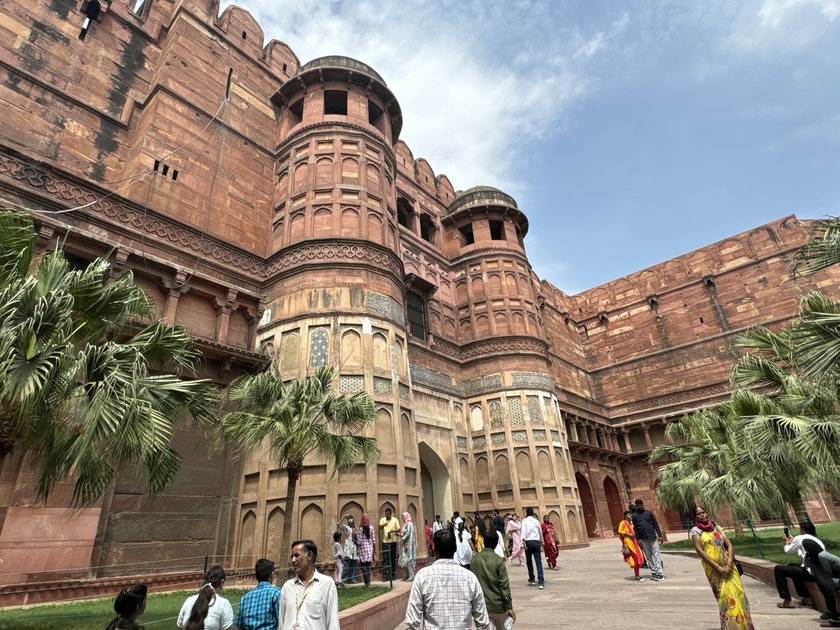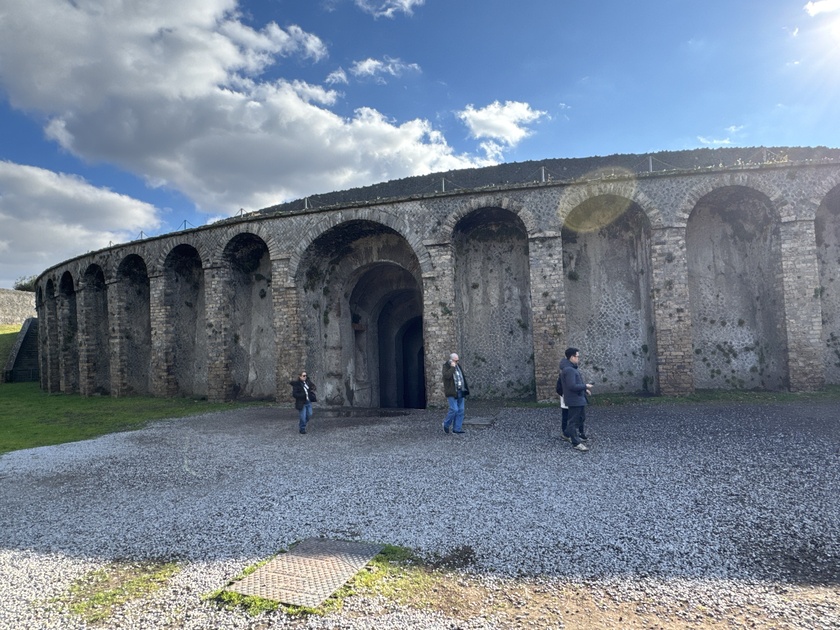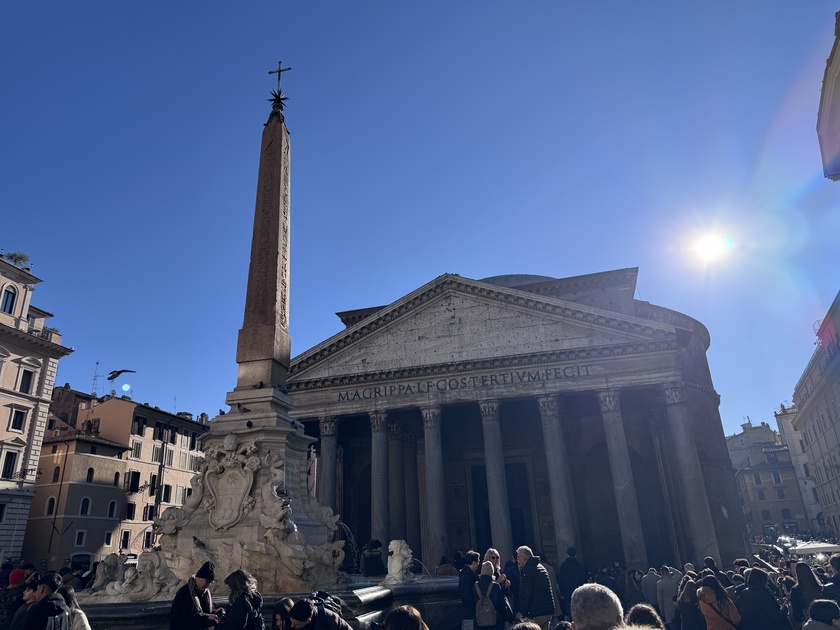The Agra Fort (Qila Agra) is a historical fort in the city of Agra, and also known as Agra's Red Fort.
Mughal emperor Humayun was crowned at this fort. It was later renovated by the Mughal emperor Akbar from 1565 and the present-day structure was completed in 1573.
It served as the main residence of the rulers of the Mughal dynasty until 1638, when the capital was shifted from Agra to Delhi. It was also known as the "Lal-Qila" or "Qila-i-Akbari". Before being captured by the British, the last Indian rulers to have occupied it were the Marathas.
In 1983, the Agra fort was inscribed as a UNESCO World Heritage Site because of its importance during the Mughal Dynasty. It is about 2.5 kilometers (1.6 mi) northwest of its more famous sister monument, the Taj Mahal.
The fort can be more accurately described as a walled city. It was later renovated by Shah Jahan.
Only about 30% of the site is accessible for visitors since it’s still used by the Indian army. What is accessible is a real...
The Ruins of Pompeii: A Frozen Snapshot of Ancient Rome
Pompeii was a thriving ancient Roman city in Campania, Italy, near modern Naples. Founded around the 7th–6th century BC (possibly by the Oscans), it grew into a prosperous port and resort town with a population of about 10,000–20,000 by the 1st century AD. On August 24, 79 AD, Mount Vesuvius erupted catastrophically in a Plinian eruption, ejecting ash and pumice high into the atmosphere before unleashing deadly pyroclastic surges.
The city was buried under 4–6 meters (13–20 feet) of volcanic material, preserving it remarkably well—streets, buildings, frescoes, artifacts, and even casts of victims in their final poses.
This rapid burial created one of the world’s best-preserved ancient sites, offering unparalleled insights into Roman daily life: homes with gardens, bakeries with loaves still in ovens, theaters, baths, brothels, and graffiti on walls.
Rediscovered in the late 16th century and systematically excavated from 1748, ...
The Pantheon in Rome—one of the Eternal City’s most mesmerizing wonders! This ancient marvel has stood for nearly 2,000 years, blending engineering genius with timeless beauty.
Built around AD 126 by Emperor Hadrian (though it bears an inscription crediting Marcus Agrippa from an earlier version), the Pantheon started as a temple to all the gods (“Pan-theon” means “all gods” in Greek). It survived fires, floods, and centuries of history thanks to its conversion into a Christian church in AD 609. Today, it’s the Basilica of St. Mary and the Martyrs, making it the best-preserved ancient Roman building in the world.
The real showstopper is the massive unreinforced concrete dome—the largest of its kind ever built, at 43 meters (142 feet) in diameter and height. It’s perfectly proportioned, with a 9-meter (30-foot) oculus (open hole) at the top that lets in natural light and even rain (the floor has tiny drains for those sunny showers!). The interior feels ethereal, especially ...
Castel Sant’Angelo, also known as the Mausoleum of Hadrian, is a towering cylindrical landmark on the banks of the Tiber River in Rome. Originally commissioned by Emperor Hadrian around 135 AD as a grand tomb for himself and his family, it served as a burial place for Roman emperors until Caracalla. Over nearly 2,000 years, it transformed into a medieval fortress, papal refuge, prison, and now the Museo Nazionale di Castel Sant’Angelo.
This remarkable structure began as an ancient mausoleum built between 123–139 AD, featuring a spiral ramp leading to the burial chamber where the ashes of emperors like Marcus Aurelius were interred.
In the Middle Ages, it evolved into a defensive stronghold, incorporated into Rome’s walls, and controlled by powerful families before passing to the papacy. From the 14th century, popes used it as a secure residence and treasury vault, connected to the Vatican by a secret elevated passageway known as the Passetto di Borgo, an 800-meter-long corridor famously used ...




















































